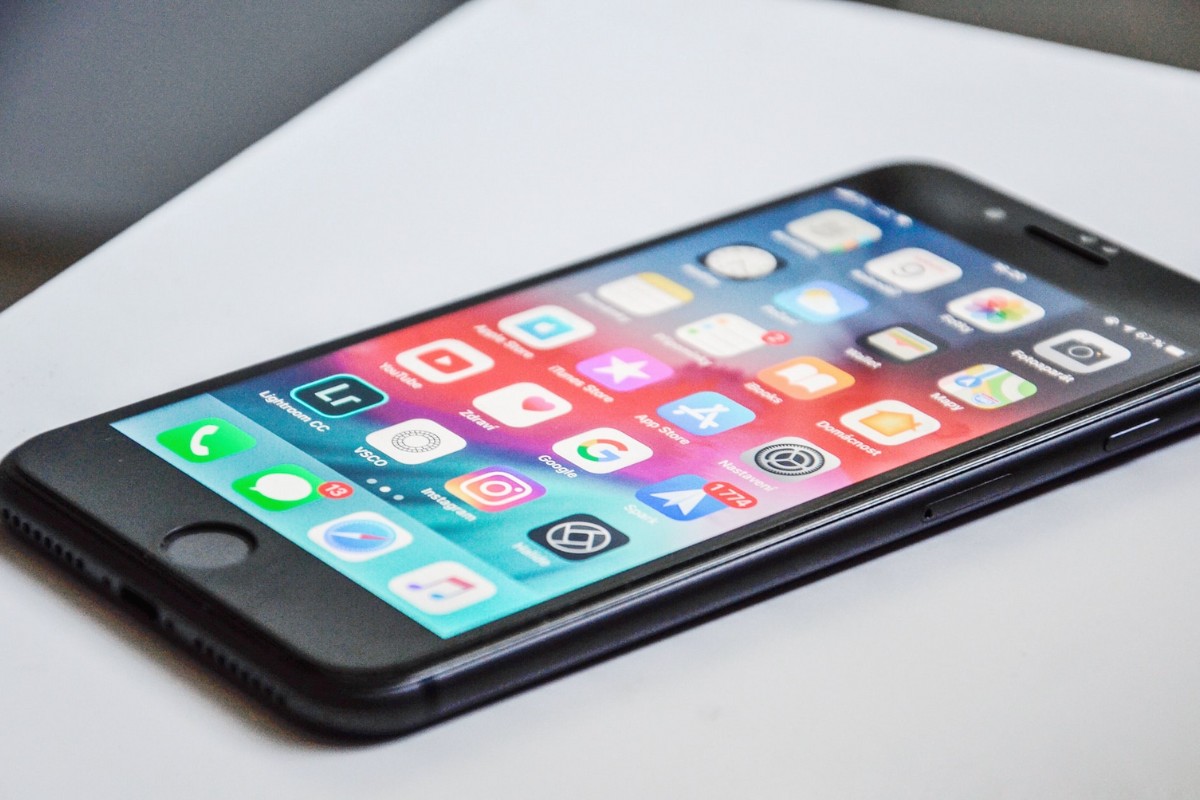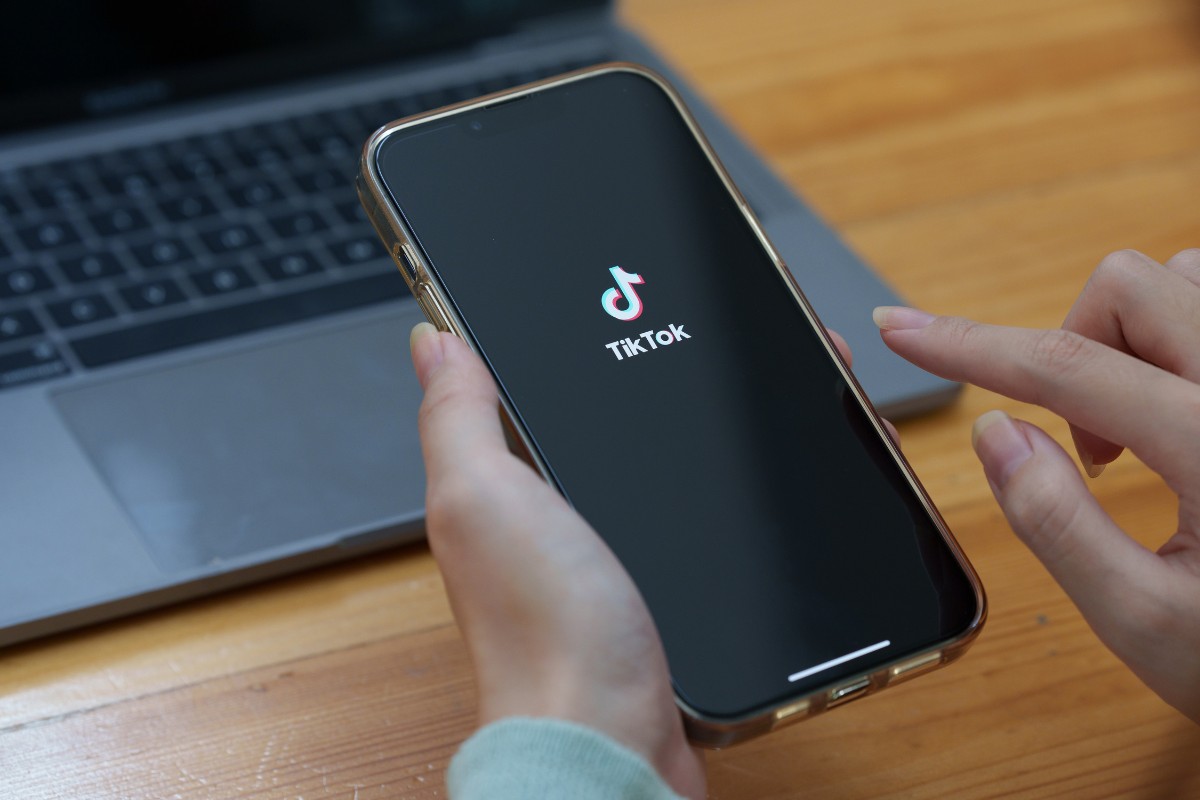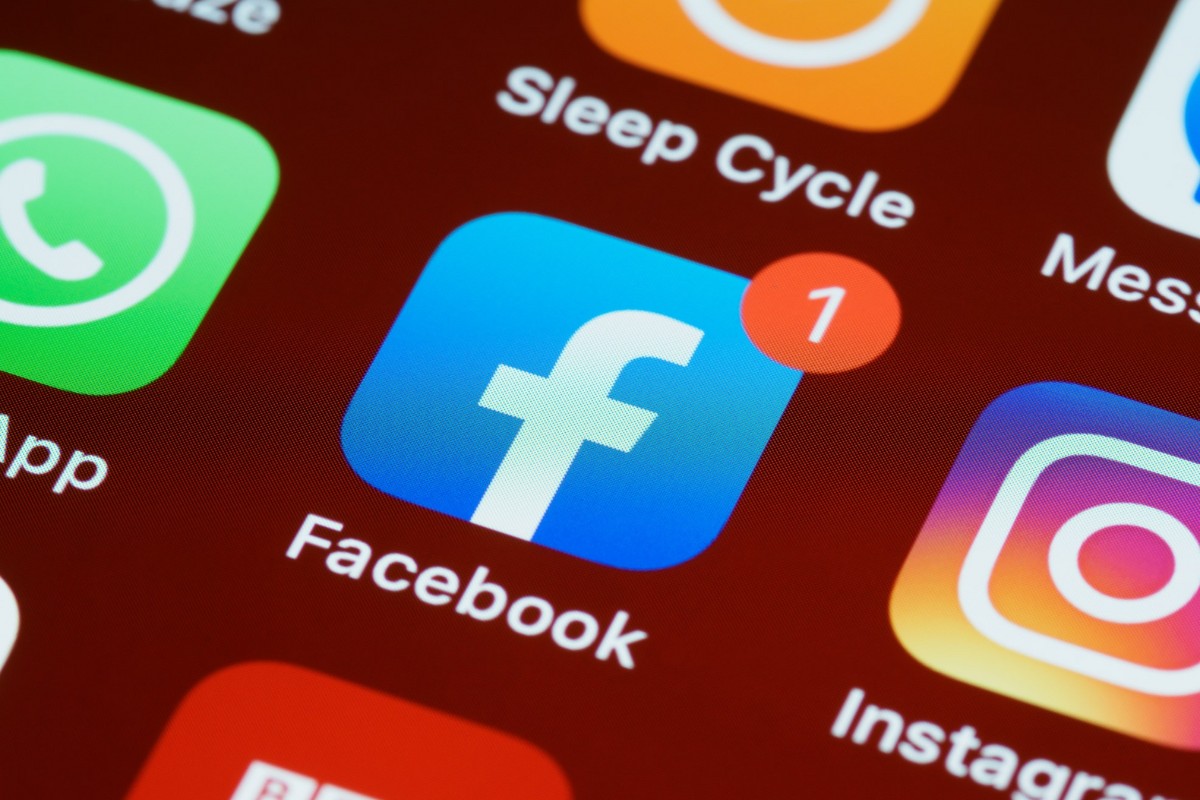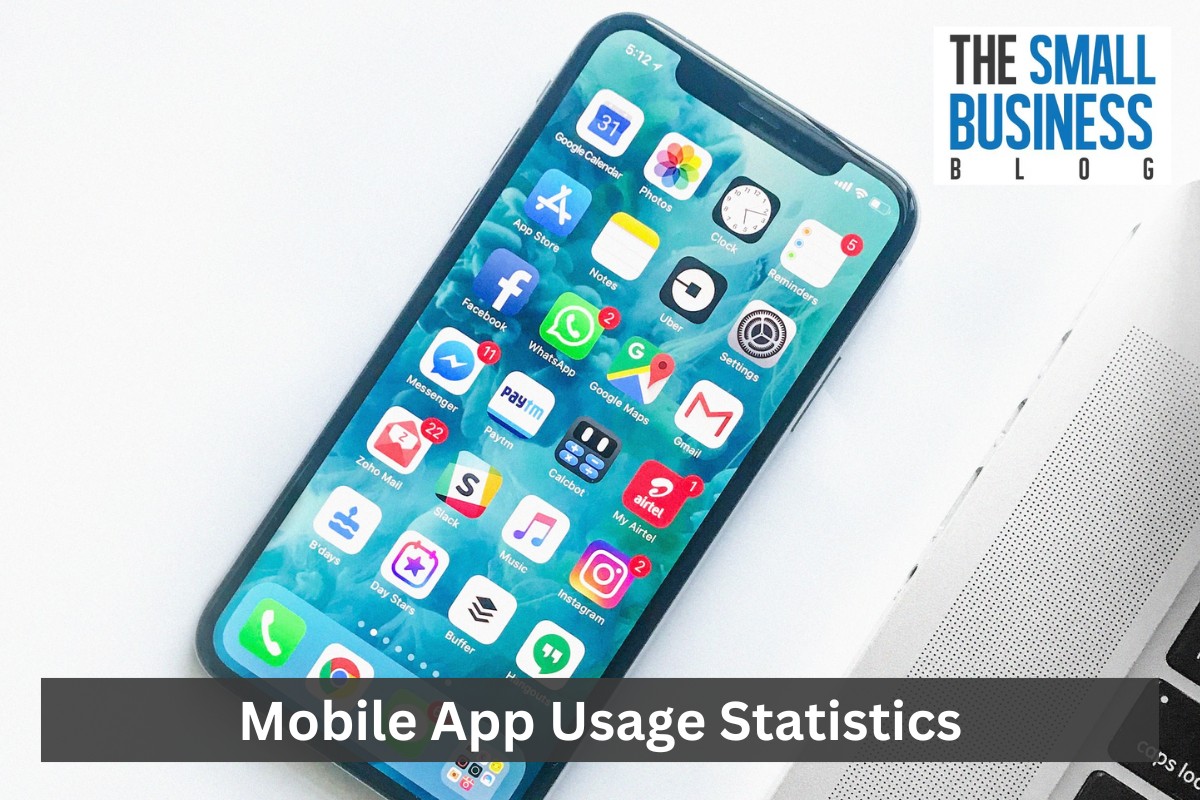As technology continues to advance, our reliance on apps deepens.
The rise of smartphones has paved the way for a thriving app ecosystem.
From social media and entertainment to productivity and health, apps have become integral to our daily routines.
In this article, we’ll delve into Mobile App Usage Statistics and provide a glimpse into people’s digital behavior.
We’ll find out how these tools affect our lives, the time we spend on them, and the ways in which they have transformed both our leisurely moments and our most productive hours.
How do our preferences change between socializing, seeking entertainment, boosting productivity, and embracing healthier lifestyles?
These questions find their answers in the gathered data that reveals the subtle but deep shifts in how we engage with technology.
Post Contents
- 1 Key Statistics
- 2 General Mobile App Usage Statistics in 2024
- 2.1 1. In 2020, the typical mobile user had approximately 40 apps on their device
- 2.2 2. In 2020, 218 billion apps were downloaded all over the world
- 2.3 3. On average, individuals interact with around 9 different mobile applications daily
- 2.4 4. An anticipated 184 billion apps are set to be downloaded in 2024
- 2.5 5. 87% of smartphone users dedicate their mobile time to various apps
- 2.6 6. In 2020, an astounding 3.5 trillion minutes were spent on Android apps by consumers
- 3 App Industry Statistics
- 3.1 7. Android offers twice the number of apps when compared to Apple
- 3.2 8. Apple’s App Store has more than 500 million weekly visits
- 3.3 9. Approximately 55 billion downloads of mobile games were reached in 2022
- 3.4 10. In 2022, TikTok accumulated 99 million downloads in the United States
- 3.5 11. Users from all over the globe collectively invested $19 billion in the App Store in 2020
- 3.6 12. Gaming apps constitute 21.07% of the total app selection on the Apple App Store.
- 4 App User Preference Statistics
- 4.1 13. Around 50% of smartphone users prefer a company’s mobile site for browsing on their phones, avoiding app downloads
- 4.2 14. Roughly 51% of smartphone users are tempted to use company apps for shopping by the promise of rewards or points
- 4.3 15. 63% of smartphone users prefer buying from companies with apps or sites suggesting products they like
- 4.4 16. 40% of users engaging with fitness and health tracking devices belong to the 30-39 age group
- 4.5 17. Users spend seven times more time in apps compared to browsers
- 4.6 18. 39% of the most commonly used apps belong to the category of social media
- 4.7 19. 78% of smartphone users in the United States opt out of downloading an app to complete a transaction
- 4.8 20. About 98.3% of mobile users have Facebook installed on their devices
- 4.9 21. 35% of millennials believe that Amazon is the most essential app
- 5 Conclusion
Key Statistics
- 87% of mobile use is spent on apps
- Users spent 7 times more time in apps than in browsers
- 218 billion apps were downloaded globally in 2020
- $19 billion was invested in the App Store in 2020
- An average user had 40 apps in 2020
- Weekly visits to Apple’s App Store exceed 500 million
- Android offers twice as many apps as Apple
General Mobile App Usage Statistics in 2024

1. In 2020, the typical mobile user had approximately 40 apps on their device
According to the latest app usage statistics, the average smartphone user had a total of 40 apps installed on their mobile device in 2020.
As users seek out applications that cater to their specific needs and interests, it becomes a testament to the personalized nature of app preferences.
No longer is app usage a one-size-fits-all scenario, it’s a reflection of personal choices and lifestyles.
As technology advances and new trends emerge, the number of apps installed on smartphones may continue to increase or follow a different trajectory altogether.
Understanding app usage trends is essential not only for developers but also for businesses, marketers, and researchers aiming to tap into the preferences and behaviors of modern consumers.
(Amity)
2. In 2020, 218 billion apps were downloaded all over the world
Global app downloads reached 218 billion in 2020, which speaks volumes about the relationship between technology and society.
This number signifies not just the skyrocketing popularity of apps but also their essential role in various aspects of our daily lives.
The year 2020, marked by global challenges and remote living because of the pandemic, witnessed a surge in demand for apps facilitating remote work, online learning, and virtual socializing.
This surge highlights how apps have adapted to cater to the needs of users.
Developers worldwide continually refine existing apps and create new ones to meet emerging demands.
This not only fuels economic growth but also fosters a culture of continuous improvement, enhancing user experiences with each change.
(Techjury)
3. On average, individuals interact with around 9 different mobile applications daily
On average, people engage with about nine different mobile apps each day.
These apps span various categories, including social media, messaging, entertainment, productivity, etc.
From checking the weather in the morning to scrolling through social media before bed, our lives are intertwined with these digital tools.
Monthly, the number of apps a person uses expands to around 30.
This broader spectrum of app usage reveals a more diverse range of activities.
While daily app usage centers around routine tasks, monthly app usage includes sporadic activities such as trying out new games, exploring shopping apps during sales, or utilizing travel apps when planning vacations.
(Amity)
4. An anticipated 184 billion apps are set to be downloaded in 2024
An estimated 184 billion app downloads are projected for 2024.
From smartphones to tablets, the accessibility of apps on various devices contributes to their widespread adoption.
With users seeking solutions to enhance efficiency, connectivity, and entertainment, app developers are met with a growing market for innovation.
The diversity of apps available caters to a wide array of needs, interests, and demographics.
It’s worth noting that this exponential growth in app usage isn’t solely attributed to individual consumers.
Businesses, too, recognize the value of apps in engaging customers and streamlining operations.
(Website Builder)
5. 87% of smartphone users dedicate their mobile time to various apps
The mobile activities of 87% of smartphone users are centered around different apps.
This data shows the diminishing role of traditional mobile web browsing, as users increasingly turn to apps to fulfill their needs.
Apps offer a tailored experience, often presenting content and features that align with individual preferences.
The user-friendly interfaces of apps also contribute to their popularity, enabling effortless navigation and interaction.
Social media apps get a significant portion of users’ attention, allowing them to stay in touch, share experiences, and stay updated on trends.
Gaming apps provide an avenue for entertainment and relaxation, creating immersive experiences that captivate users for hours.
Additionally, productivity apps aid in time management, organization, and collaboration, making them indispensable tools for both personal and professional spheres.
(Techjury)
6. In 2020, an astounding 3.5 trillion minutes were spent on Android apps by consumers
The year 2020 brought about unprecedented changes to daily routines.
The pandemic-related lockdowns and restrictions meant that people turned to their smartphones for work, connection, and leisure more than ever before.
A large chunk of this time was dedicated to Android apps.
3.5 trillion minutes were spent swiping, tapping, and scrolling through a diverse array of apps, ranging from social media platforms connecting friends across the globe to productivity tools aiding remote work.
This surge in app usage displays a transition in the way we communicate, work, and unwind.
Messaging apps witnessed a surge in usage as individuals sought to bridge the physical distance between them.
(Website Builder)
App Industry Statistics
7. Android offers twice the number of apps when compared to Apple
When it comes to options, Android users find themselves having 3.55 million apps to choose from which are readily accessible on the Google Play Store.
This exhibits the platform’s openness and inclusivity for developers worldwide.
The Google Play Store acts as a virtual playground where developers can showcase their creations to a vast audience.
In contrast, Apple’s App Store offers a more curated selection, housing around half the number of apps that Android has.
While Apple’s approach emphasizes quality control and user experience, the relatively smaller app count states that it tends to lean towards a more selective range, ensuring that each app meets stringent standards before reaching its users.
(Amity)
8. Apple’s App Store has more than 500 million weekly visits
Weekly visits to Apple’s App Store have surpassed the 500 million mark, demonstrating its immense popularity and usage.
The increase in weekly visits not only highlights the widespread use of applications but also reflects the growing reliance on technology for everyday tasks.
From shopping and banking to socializing and learning, apps have transformed our smartphones into versatile companions that cater to an array of needs.
This trend has pushed app developers to create innovative and user-centric solutions, driving healthy competition within the industry.
(Website Builder)
9. Approximately 55 billion downloads of mobile games were reached in 2022
In the year 2022, mobile game downloads totaled about 55 billion.
The mobile gaming industry solidified its status as a leading player in the app market.
The growing number of game downloads highlights the integration of smartphones and tablets into our daily lives, as they become central hubs for both entertainment and social interaction.
Interestingly, the surge in game downloads is not only about entertainment but also reflects the evolving social interactions of people.
Mobile games often incorporate multiplayer features, connecting individuals from around the world and creating a sense of camaraderie.
(Truelist)
10. In 2022, TikTok accumulated 99 million downloads in the United States

Tiktok’s continuous rise has been nothing short of remarkable, captivating users with its short-form videos and creative expression.
From dance challenges to lip-sync performances, TikTok’s innovative platform has become a cultural phenomenon, reshaping how we engage with content in the digital age.
What sets TikTok apart is its ability to go beyond demographics and resonate with a diverse audience.
Its intuitive interface and endless stream of captivating videos have made it a staple for entertainment and inspiration.
Here is a list of the most popular apps downloaded in 2022:
- TikTok accumulated 99 million downloads in the United States
- Instagram accumulated 72 million downloads in the United States
- Cash App accumulated 64 million downloads in the United States
- WhatsApp accumulated 63 million downloads in the United States
- Snapchat accumulated 54 million downloads in the United States
- Subway Surfers accumulated 51.4 million downloads in the United States
- Roblox accumulated 50.9 million downloads in the United States
(Zippia)
11. Users from all over the globe collectively invested $19 billion in the App Store in 2020
The $19 billion spent in 2020 underlines the dynamics of consumer behavior.
People are not just downloading apps, they’re investing in them.
This investment can be attributed to various factors such as the rise of subscription-based models, in-app purchases, and premium features.
From games to educational tools, users are willing to open their wallets to access enhanced experiences and features within their chosen apps.
It’s essential to recognize that this spending trend signifies more than just monetary transactions.
It reflects the value that users place on the convenience, entertainment, and utility that these apps bring into their lives.
From fitness apps helping individuals stay healthy to productivity apps streamlining work tasks, the significance of apps goes beyond dollars and cents.
(Website Builder)
12. Gaming apps constitute 21.07% of the total app selection on the Apple App Store.
The dominance of gaming apps highlights the appeal of interactive entertainment.
This extensive array of games presents both the creativity of developers and the enthusiastic engagement of users.
Its prevalence not only reflects the changing trends in digital entertainment but also hints at the impact that apps have on shaping our modern leisure activities.
Here are the primary app categories featured on the Apple App Store:
- Gaming apps constitute 21.07% of the total app selection on the Apple App Store
- Business apps constitute 10.7% of the total app selection on the Apple App Store
- Education apps constitute 8.66% of the total app selection on the Apple App Store
- Lifestyle apps constitute 8.58% of the total app selection on the Apple App Store
- Utility apps constitute 6.39% of the total app selection on the Apple App Store
(Zippia)
App User Preference Statistics
13. Around 50% of smartphone users prefer a company’s mobile site for browsing on their phones, avoiding app downloads
About 50% of smartphone users exhibit a preference for browsing a company’s mobile site on their devices, skipping the need for app downloads.
This choice is largely attributed to the reluctance of users to clutter their devices with app downloads.
The hassle of downloading, installing, and managing numerous apps has led many to prefer the simplicity and convenience of visiting a brand’s mobile site directly.
The choice of investing in an app should be balanced with users’ lean towards mobile sites.
Despite apps offering personalization and advanced features, many potential users might be put off by the need to download them.
(Think With Google)
14. Roughly 51% of smartphone users are tempted to use company apps for shopping by the promise of rewards or points
The charm of rewards has a strong effect on our behavior, and this is particularly evident in the sector of mobile apps.
The convenience of accessing services, products, and information through our smartphones has transformed the way we interact with brands.
Among the range of apps available, those that offer rewards hold a unique appeal, influencing users’ preferences and habits.
By offering rewards or points, companies create a good relationship with their customers.
Users engage more frequently with the app, exploring its features and making purchases with a sense of anticipation for the rewards that await them.
It’s a win-win situation, companies foster customer loyalty while users enjoy a more engaging and rewarding experience.
(Think With Google)
15. 63% of smartphone users prefer buying from companies with apps or sites suggesting products they like
Mobile apps have evolved from being mere tools for entertainment and convenience to powerful marketing platforms that can significantly influence consumer preferences and purchasing decisions.
This transformation is fueled by the capability of these apps to offer personalized suggestions tailored to individual interests and preferences.
As a result, companies with apps or sites recommending preferred products appeal to 63% of smartphone users.
As customers increasingly demand tailored experiences, companies are presented with a unique opportunity to establish brand loyalty by leveraging app usage statistics.
By analyzing user behavior, preferences, and purchase history, businesses can fine-tune their recommendations, making them more accurate and appealing.
(Think With Google)
16. 40% of users engaging with fitness and health tracking devices belong to the 30-39 age group
As people increasingly prioritize their well-being, the demand for tools that help monitor and enhance health has soared.
This trend is particularly evident in the popularity of fitness and health tracking devices, which have captured the attention of 40% of users aged 30 to 39.
These applications serve as valuable companions, enabling individuals to closely monitor their exercise regimens, dietary habits, sleep cycles, and overall state of well-being.
The members of this demographic often lead busy lives, juggling careers, family, and personal commitments.
As such, they seek efficient ways to integrate health management into their routines without imposing excessive time constraints.
Health and fitness apps meet this need by providing customized guidance and monitoring.
(Truelist)
17. Users spend seven times more time in apps compared to browsers
Apps have become the go-to gateway for tasks ranging from social networking to shopping, and entertainment to productivity.
Convenience, tailored experiences, and user-friendly interfaces have contributed to this paradigm shift.
Users dedicate 7 times more time to apps in comparison to browsing activities.
While browsers still have their place for certain tasks, their dominance is waning.
The attraction of apps lies in their ability to offer a focused and immersive experience, often free from the distractions that browsers can entail.
From push notifications to personalized recommendations, apps have redefined how we receive information and engage with content.
(Amity)
18. 39% of the most commonly used apps belong to the category of social media
Among the most frequently used apps, a substantial 39% fall under the category of social media.
The ease of access to these platforms via smartphones has contributed to their widespread usage.
They cater to our desire for communication and validation, allowing us to interact with others regardless of geographical boundaries.
However, it’s essential to draw a balance between the benefits and potential drawbacks of excessive app usage.
While social media apps facilitate connections, they can also unintentionally lead to issues like digital addiction, decreased face-to-face interactions, and concerns about online privacy.
(Website Builder)
19. 78% of smartphone users in the United States opt out of downloading an app to complete a transaction
Users are increasingly seeking smoother processes that enhance their online engagements.
In the United States, 78% of smartphone users opt not to download an app to finalize a transaction.
This data shows the reluctance among smartphone users to clutter their devices with additional apps solely for transactional purposes.
This preference indicates that users prioritize streamlined interactions, seeking solutions that minimize steps and optimize their digital journey.
One plausible explanation for this behavior is the limited storage capacity and the desire to keep smartphones clutter-free.
Users tend to be selective in allocating precious storage space to applications that serve multiple functions rather than singular tasks.
(Website Builder)
20. About 98.3% of mobile users have Facebook installed on their devices

An overwhelming 98.3% of mobile users have Facebook installed on their devices.
This social media giant has managed to carve its presence into the routines of people around the world.
Whether it’s connecting with friends, sharing life updates, or consuming news and content, Facebook’s influence remains consistent.
Additionally, its continuous development by introducing new features and functionalities keeps users engaged and invested.
This static is a testament to the app’s ever-continuous ability to connect people, enable communication, and adapt to changing times.
(Website Builder)
21. 35% of millennials believe that Amazon is the most essential app
Apps come in many types, catering to a wide range of needs, from communication and entertainment to productivity and shopping.
Among these apps, Amazon stands out, capturing the attention and reliance of a significant portion of the millennial population.
Amazon’s seamless shopping experience, extensive product range, and user-friendly interface contribute to its indispensability.
The convenience of purchasing goods at the tap of a screen resonates with a generation accustomed to instant gratification.
According to millennials, these are the most essential apps one should have:
- 35% of millennials believe that Amazon is the most essential app
- 30% of millennials believe that Gmail is the most essential app
- 29% of millennials believe that Facebook is the most essential app
- 18% of millennials believe that Messenger is the most essential app
- 16% of millennials believe that Youtube is the most essential app
- 14% of millennials believe that Google Maps is the most essential app
- 11% of millennials believe that Google Search is the most essential app
(Marketing Charts)
Conclusion
To conclude, as smartphones have become extensions of ourselves, these mobile app usage statistics reveal fascinating insights into our digital behaviors and preferences.
The diverse selection of data highlights the integral role apps play in modern life, from enhancing productivity to delivering entertainment and shaping social interactions.
From the average number of apps per user to the surge in downloads during the pandemic, these numbers mirror our digital behavior, revealing our preferences, routines, and societal shifts.
With the prevalence of social media, the significance of health-tracking apps, and the rise of personalized recommendations, apps have seamlessly integrated into a part of our routines.
Their accessibility, convenience, and capabilities mark a transition in how we learn, work, and unwind.
As we go about in this app-centric world, these statistics stand as directions, guiding our understanding of the digital age’s interaction between technology, behavior, and progress.






























